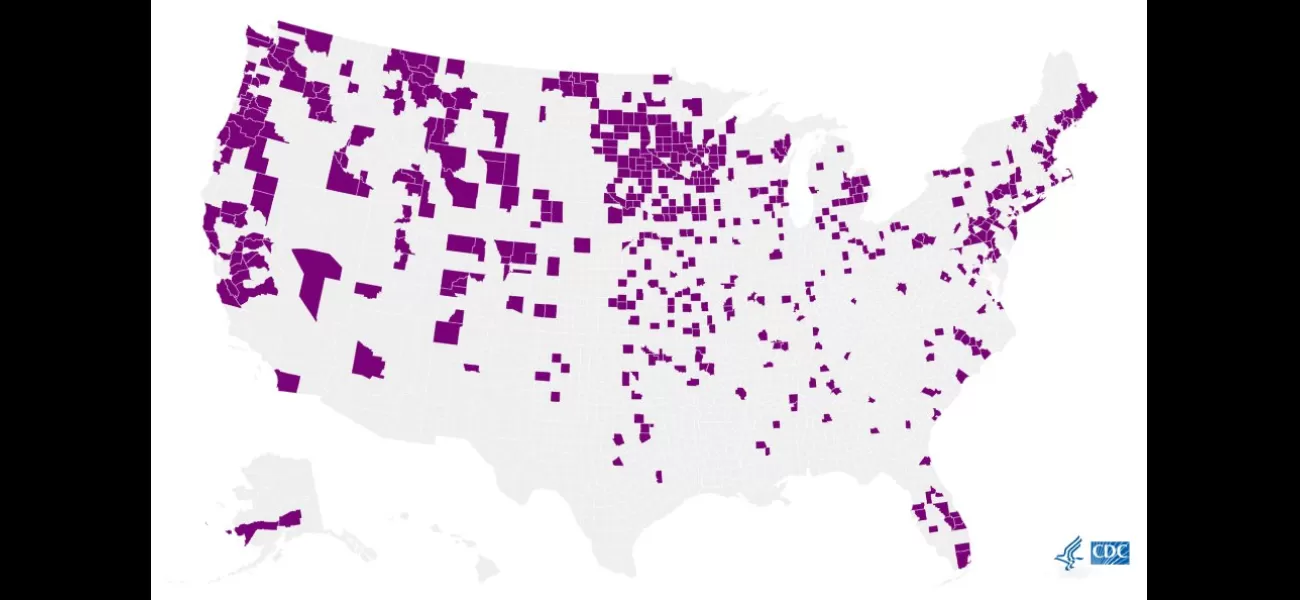New map displays the spread of bird flu in the US and highlights a recent warning.
Bird flu has been reported in almost every US state.
April 5th 2024.

According to the latest update from the Centers for Disease Control and Prevention (CDC), the H5N1 bird flu has been making its way across the United States. Outbreaks have been reported in almost every state, prompting the national public health agency to issue a new health warning.
The numbers are concerning – 48 states and 513 counties have reported a total of 1,116 outbreaks of the avian influenza strain. To make matters more tangible, the CDC has released a map showing the areas where the bird flu has been detected. It's clear that some states have been hit harder than others, with only Hawaii and Louisiana remaining unaffected.
The CDC has been closely monitoring the situation, and on Friday they issued a health alert after confirming a case of H5N1 infection in a human. This is the first time a human has caught the bird flu from dairy cows in the US. The infected individual is a farm worker at a commercial dairy farm in Texas, who developed conjunctivitis in late March and tested positive for H5N1.
Interestingly, the bird flu was first found in cows in three US states – Texas, Kansas, and New Mexico – shortly before the human infection. Since then, it has spread to cows in three more states: Idaho, Michigan, and Ohio.
Thankfully, there have been no reported deaths or severe cases of H5N1 in the US so far. However, the CDC is urging caution and recommending that people avoid contact with sick or dead animals, as well as surfaces contaminated with animal feces, litter, and raw milk. They also advise wearing eye and respiratory protection when in close proximity to these potentially infected areas.
It's clear that the bird flu is a serious threat, especially to those with job-related or recreational exposure to infected animals. As the CDC states in their latest alert, the risk to the general public is currently low, but it's important for those at higher risk to take appropriate precautions. With outbreaks among both wild birds and domestic animals, it's crucial to stay informed and aware of potential risks.
The numbers are concerning – 48 states and 513 counties have reported a total of 1,116 outbreaks of the avian influenza strain. To make matters more tangible, the CDC has released a map showing the areas where the bird flu has been detected. It's clear that some states have been hit harder than others, with only Hawaii and Louisiana remaining unaffected.
The CDC has been closely monitoring the situation, and on Friday they issued a health alert after confirming a case of H5N1 infection in a human. This is the first time a human has caught the bird flu from dairy cows in the US. The infected individual is a farm worker at a commercial dairy farm in Texas, who developed conjunctivitis in late March and tested positive for H5N1.
Interestingly, the bird flu was first found in cows in three US states – Texas, Kansas, and New Mexico – shortly before the human infection. Since then, it has spread to cows in three more states: Idaho, Michigan, and Ohio.
Thankfully, there have been no reported deaths or severe cases of H5N1 in the US so far. However, the CDC is urging caution and recommending that people avoid contact with sick or dead animals, as well as surfaces contaminated with animal feces, litter, and raw milk. They also advise wearing eye and respiratory protection when in close proximity to these potentially infected areas.
It's clear that the bird flu is a serious threat, especially to those with job-related or recreational exposure to infected animals. As the CDC states in their latest alert, the risk to the general public is currently low, but it's important for those at higher risk to take appropriate precautions. With outbreaks among both wild birds and domestic animals, it's crucial to stay informed and aware of potential risks.
[This article has been trending online recently and has been generated with AI. Your feed is customized.]
[Generative AI is experimental.]
0
0
Submit Comment





